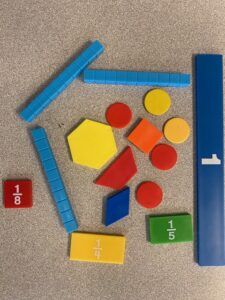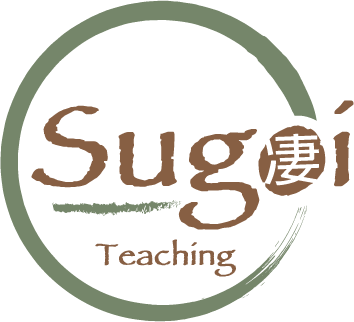 Teachers are central to creating a climate of equity and inclusion and making coursework accessible for all students. It is part of what makes teaching so rewarding-orchestrating situations that empower students as learners. It is rewarding, in part, because it takes a lot of patience, reflection, and expertise. While students’ individual needs are difficult to anticipate, there are many ways teachers can create inclusive and accessible environments for a myriad of diverse learners. This month’s mathematics focus includes a few common accommodations that promote making content accessible and inclusive.
Teachers are central to creating a climate of equity and inclusion and making coursework accessible for all students. It is part of what makes teaching so rewarding-orchestrating situations that empower students as learners. It is rewarding, in part, because it takes a lot of patience, reflection, and expertise. While students’ individual needs are difficult to anticipate, there are many ways teachers can create inclusive and accessible environments for a myriad of diverse learners. This month’s mathematics focus includes a few common accommodations that promote making content accessible and inclusive.
- Hands-On: Provide manipulatives (or pre-cut an extra copy of each pattern) for students to build shapes, compare patterns, or represent situations. Concrete models allow for easy manipulation while students are learning new information. If hands-on manipulatives are not available, it is also beneficial for students to draw models when solving problems. For example, base ten blocks can be drawn using points to represent ones, lines to represent tens, and squares to represent hundreds. Examples of manipulatives include base ten blocks, algebra tiles, pattern blocks, and virtual manipulatives.
- Technology: Consider providing students with an option to use technology (calculators, applications, preformatted or enlarged graph paper, etc.) to eliminate the barrier of computation. When learning mathematical concepts, or solving more complex problems, students often attend to multiple ideas at once. Promote the learning of content by removing or reducing barriers that can bog down or stop learning.
- Visual Tools: Provide color pens, pencils, and highlighters as useful tools for students to see patterns visually and/or represent and organize their thinking. Visual tools assist in thinking and provide support for students when explaining their work to peers.
- Representational Tools: Provide additional copies of the pattern, graph, or task so students can record the varieties of strategies or representations shared. Using representations as tools allows student choice in how they see problems. Making connections between representations can deepen students understanding of important concepts.
- Organizational Tools: Provide a graphic organizer as a support for students to graph and organize their thinking, granting greater access to engage in discourse regarding the mathematical concepts. Setting up a structure for students provides clarity of what is expected and removes ambiguity. Over time, providing scaffolds for students to learn how to create their own organization promotes self-efficacy.
- Chunking: Chunking is the process of connecting incoming information by relating it to prior knowledge. Making connections to prior learning when learning new material ensures students see mathematics as coherent, rather than learning new, disconnected topics. Maximize students’ working memory by chunking information into smaller tasks while allowing them to connect to what they already know. For example, when students are learning to add two-digit numbers, build from their prior learning of the base ten system and adding single-digit numbers. Another example, when students are learning about rates of change of exponential functions, have them compare how they are similar and different to rates of change of linear functions.
As you navigate this school year, my hope is that the resources included in this article will be helpful. I would love to hear from you. Please email and share your favorite accommodation or let me know if you have any questions.

Being able to create these environments that facilitate students learning process is one of the most gratifying experiences. But there is a lot of preparation that has to be done on the teacher’s part. Thank you for opening my eyes to all the diverse things that can be considered in order to create these ideal environments.
Thank you for your comments. Time spent cultivating a good learning environment and developing a strong relationship of trust pays off greatly.
Hi and thanks for sharing this. This is an excellent resource for teachers and for parents trying to help their children with schoolwork. Now that our daughter has finally gone back to school full-time for in-person tuition, just this morning, for the first time in a year we have returned to the backseat as it were. These techniques are another reminder that it is all too easy to focus on the content of what is being learned and miss the different approaches that can be taken for the process of learning. As you say, different children learn in different ways, and often providing tactile and visual components is essential for some kinds of learners to be able to progress. Best regards, Andy
My job as a special education teacher revolves around trying to find the right learning style for each child. Hands-on activities can be helpful for so many students.
I home school my son because of his athletics. Math is the hardest for him. I am a math wiz, but teaching it is not easy for me as I don’t know how to break down a problem. This gives me some ideas on how I can do better to help him understand the different math concepts. There is hope!
Thank you for your comments, I’m glad we could help.
This post brings together all the teaching aids to help students not just grasp, but to fully understand mathematical problems.
By seeing something makes it much more understandable. Seeing and feeling the issue makes it real.
I haven’t heard of the term chunking before, but it how we learn and progress. It is how the world develops. We learn by building on previous learning and that way are constantly growing and developing.
Thanks for sharing.
Thank you for your comments!